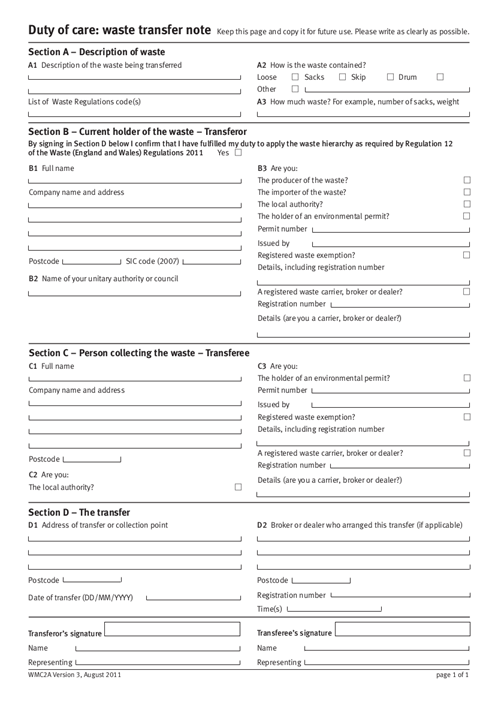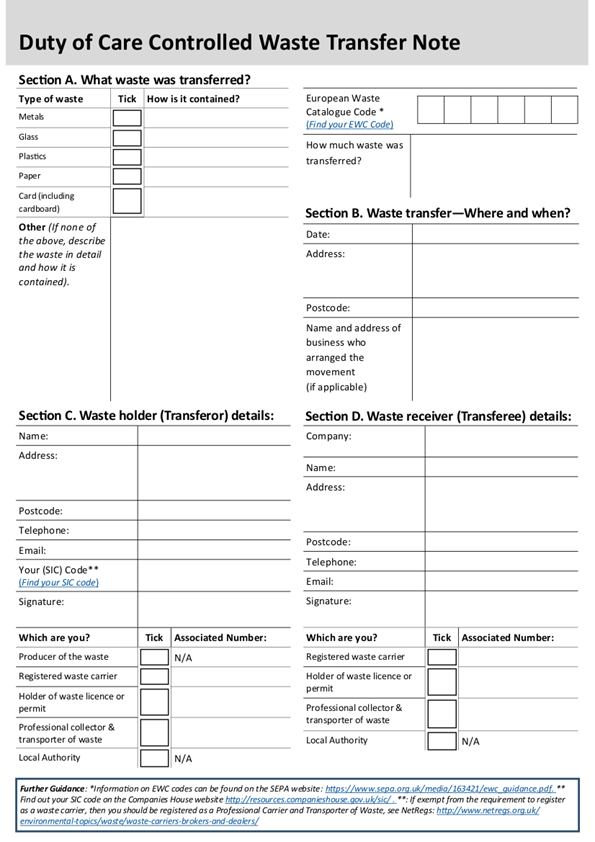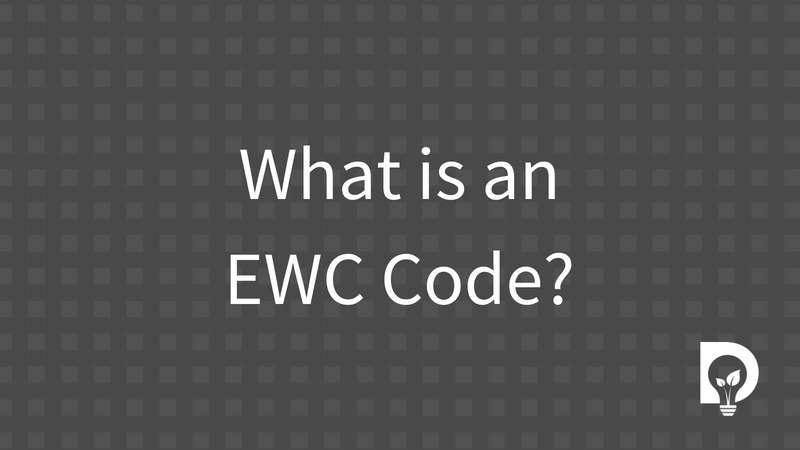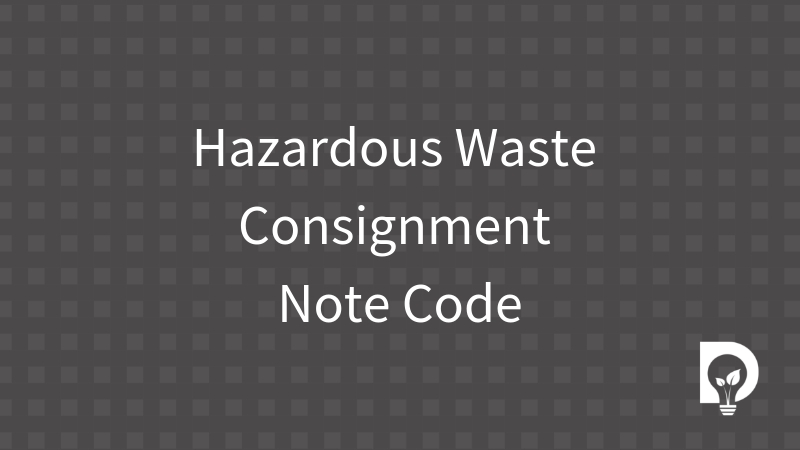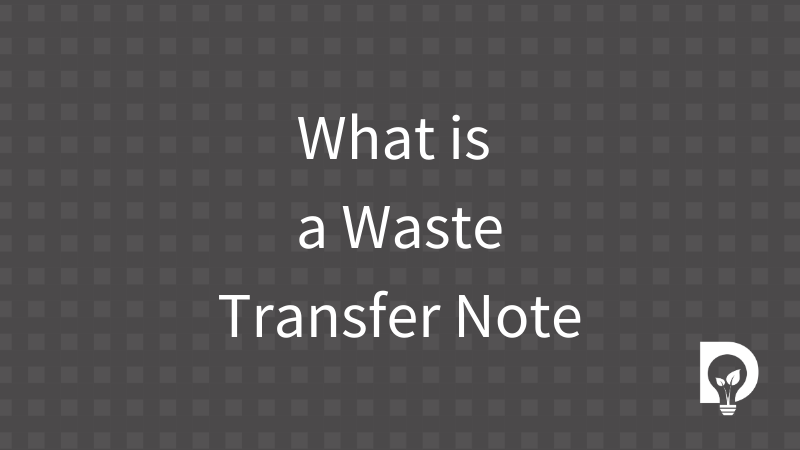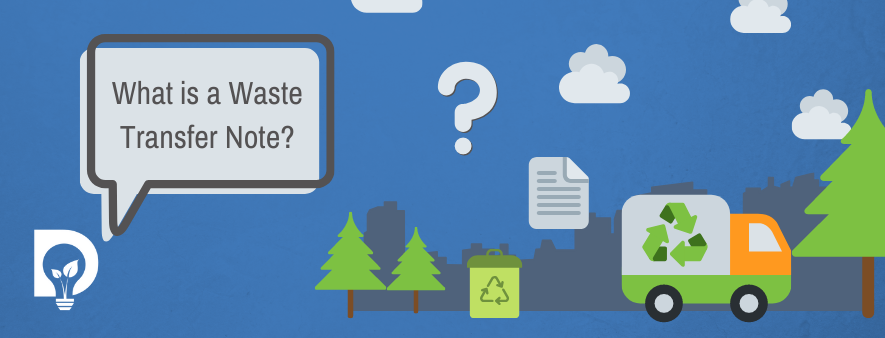
A waste transfer note (WTN) is a document that details the transfer of waste from one person to another. For each load of non-hazardous waste you move off your premises, you need a waste transfer note or a document with the same information, such as an invoice. Sometimes these can be called a duty of care note.
The waste transfer note forms part of the waste duty of care. A note is needed for all movements of waste, including:
- collections from businesses by registered waste carriers
- movements from one premises to another within the same business
- movements from customer premises, where another business has produced waste
A waste transfer note must be completed and signed by both the person handing over the waste and the person receiving it. It must contain enough information about the waste for it to be handled safely and either recovered or disposed of legally. If you do not give enough information and your waste is mismanaged as a result, you could be prosecuted.
You must check that anyone you pass your waste to holds the relevant registration, permit or exemption for the type of waste you pass to them.
If you need help completing your WTN, get in touch any time, as we have built affordable software to help you complete digital WTNs correctly.
Are WTNs legally required?
Waste transfer notes ensure that there is a clear audit trail from when the waste is produced until it is disposed of. Your business and the business taking your waste both need to:
- Fill in the sections of the waste transfer note that apply to you
- Sign it
- Keep a copy for 2 years
- Show it to an enforcement officer from your local council or the regulator (Environment Agency, Scottish Environment Protection Agency, National Resources Wales, Northern Ireland Environment Agency) if asked
It is a legal requirement to keep copies of all waste transfer notes and waste transfer information for at least two years.
What does a WTN look like?
There is no standard waste transfer note and many waste carriers produce their own versions. The WTN should include:
- a description of the waste
- how the waste is contained or packaged
- the quantity of the waste
- the place and date of transfer
- the name of the person or organisation that produced the waste
- the name of the person or organisation that is moving the waste
- details of the permit, licence or exemption of the person receiving the waste
- the appropriate European Waste Catalogue (EWC) code for your waste
- the Standard Industry Code (SIC) of your business
You must include enough information to help the business taking your waste to handle and dispose of it safely.
Environment Agency Example of a Waste Transfer Note
Scottish Environment Protection Agency Example of a Waste Transfer Note
How to fill in a WTN
The waste transfer note should be filled out in a specific order, by the right person at the right time. This is to ensure that there is a clear audit trail from when the waste is produced until it is disposed of.
Step 1: Creator of the waste confirms
The creator of the waste must confirm what the waste is, how much there is and where it was created before the waste is removed. You will normally need 2 copies, although more may be needed in some circumstances. Give all copies to the person collecting the waste.
Step 1: Details
Complete:
- the description of the waste
- how the waste is contained or packaged
- the quantity of the waste
- the appropriate European Waste Catalogue (EWC) code for your waste
- the Standard Industry Code (SIC) of the organisation that created the waste (if applicable)
Step 2: Person collecting waste confirms
The person that is collecting the waste must confirm that they agree with the person that created the waste before the waste is removed. Following this they should confirm and complete the details about their organisation that is collecting the waste
Step 2: Details
Check:
- the description of the waste
- how the waste is contained or packaged
- the quantity of the waste
- the appropriate European Waste Catalogue (EWC) code for your waste
- the Standard Industry Code (SIC) of the organisation that created the waste (if applicable)
Complete:
- the name of the person or organisation that is moving the waste
- details of the permit, licence or exemption of the person receiving the waste
Step 3: Waste is collected
The creator of the waste must check the details about the organisation and person collecting the waste before the waste is removed. Once this is checked the creator of the waste should sign and date the document and pass it to the waste collector to sign and date. Both parties should keep a copy of the waste transfer note.
Step 3: Details
Check:
- the name of the person or organisation that is moving the waste
- details of the permit, licence or exemption of the person receiving the waste
Complete:
- the waste creator’s signature and date
- the waste collector’s signature and date
What is the difference between a waste transfer note and a consignment note?
A waste transfer note is a document which must accompany every movement of inert and non-hazardous waste. It is a legal requirement to keep copies of all waste transfer notes for a minimum of two years.
A hazardous waste consignment note (HWCN) is the document required for the movement of hazardous waste. It is a legal requirement to keep copies of all consignment notes for a minimum of three years. On a HWCN there is an additional section to indicate the disposal site that the waste is being taken to.
